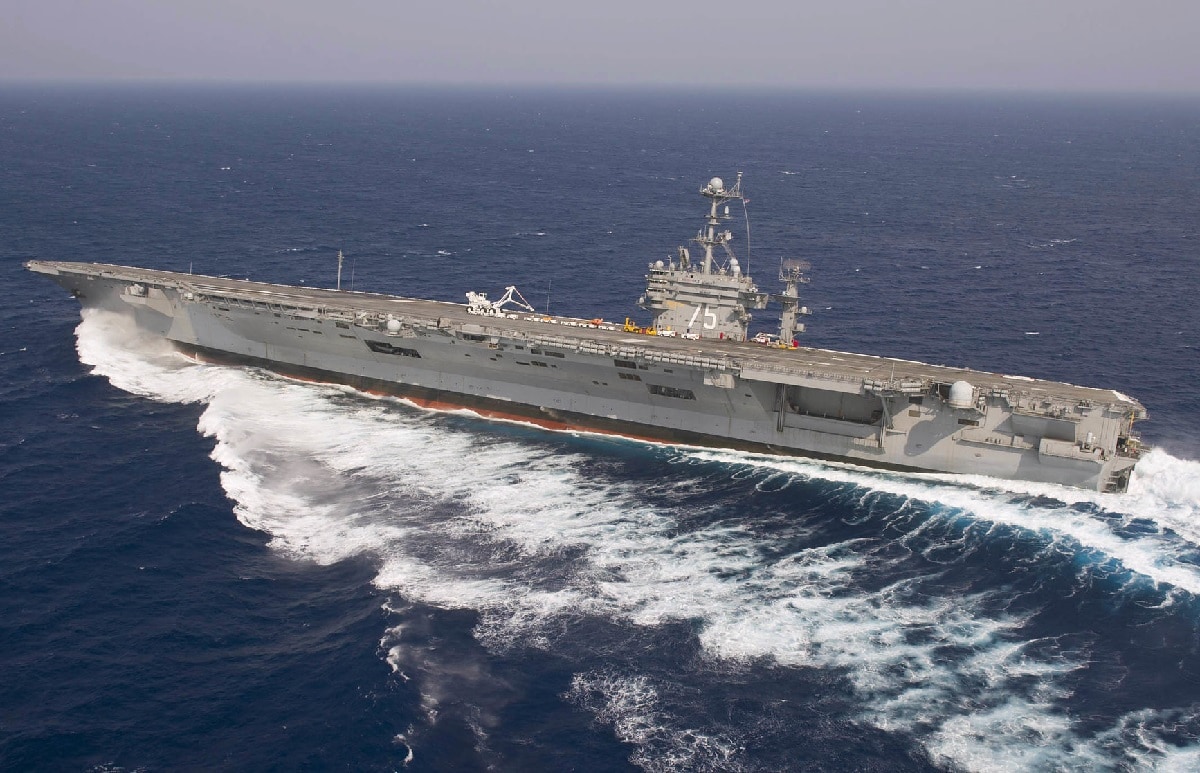The ghost of Mahan smiles.
Late last month a bipartisan cohort of U.S. senators introduced the SHIPYARD Act of 2021, a measure aimed at upgrading public and private shipyards. (Look up the gimmicky acronym yourself.) If approved the act will provide $25 billion worth of taxpayer money, including $21 billion for public yards and $4 billion for private yards that supply the U.S. Navy.
The legislation comes not a moment too soon. The law of the land mandates that the navy operate a 355-ship fleet. Yet shipyards are having a hard time keeping up the 296-ship inventory the sea service has at present, to say nothing of expanding the fleet at more than a snail’s pace.
And replacing combat losses? Fuggedaboutit.
In a sense, our navy is suffering from a case of historical role reversal. It is playing the part of the Imperial Japanese Navy while China’s People’s Liberation Army plays the part of the U.S. Navy.
Here’s what I mean. Going into World War II the Imperial Japanese Navy was the Pacific Ocean’s finest. Ship for ship it was the most elite force riding the waves. But then as now, Japan was a smallish island state with a modest-sized populace. It had only limited industrial capacity to build and maintain oceangoing fleets to haul freight and make war.
Its capacity to replenish the fleet after it suffered battle damage was likewise limited.
Nor was demographics the only impediment to Tokyo’s ambitions. The nature of the Japanese Empire—scattered landmasses separated by water and connected by merchant shipping that conveyed resources hither and yon—imposed heavy opportunity costs on political leaders in Tokyo. No decision about priorities was easy; all decisions were zero-sum. Late in World War II, in fact, as losses to U.S. submarine warfare mounted to staggering dimensions, Japanese leaders had to make fateful choices between building new merchantmen and repairing or replacing warships lost to enemy action.
The U.S. Navy, by contrast, was a beneficiary of America’s burgeoning industrial might. As storm clouds gathered over Asia and Europe in the 1930s, Congress enacted a series of measures to commence building up U.S. naval power. The fall of France to Hitler’s armies precipitated the last and most ambitious of them, dubbed the Two-Ocean Navy Act of 1940. Together these naval expansion acts allowed the United States, in effect, to operate a full-up navy in each ocean rather than swing reinforcements from Atlantic to Pacific or back in times of trouble.
Shipyards and other support infrastructure constituted a major part of the naval buildup. With them came the surge capacity to mend battle damage or replace vessels lost in action. You can do a lot with a naval-industrial complex able to construct a fleet of 6,768 ships of war—the U.S. Navy’s tally by August 1945.
And today? Successive presidential administrations have designated Communist China the “pacing” geostrategic challenge for the United States, including in the marine domain. China is also the world’s foremost shipbuilder, manufacturing commercial and naval vessels in bulk. Any likely naval war would transpire in China’s extended geographic environs—meaning that the PLA Navy would enjoy convenient access to abundant repair facilities, and thus an advantage over the U.S. Navy in the ability to regenerate combat power after a sea duel.
In short, China’s navy may have more stamina and resilience than America’s. An edge goes to the pugilist able to take a punch, recover, and punch back hard. The contender with a glass jaw courts defeat in the ring—even if he’s bigger, rangier, and heavier-hitting.
Alfred Thayer Mahan would nod knowingly at all of this. In his landmark treatise The Influence of Sea Power upon History, 1660-1783, the American sea captain and historian set forth six determinants of a society’s fitness to go to sea. Three were fixed, including a country’s geographic size, coastal conformation, and natural-resource endowment. The other three involved the human factor and thus could be improved through sage political and strategic leadership.
Or they could suffer from indifferent leadership.
Demographics was one human determinant of sea power. Raw numbers of people were good, but Mahan deemed the fraction of the populace skilled at marine-related trades the crucial factor for an aspirant to sea power. It was up to officialdom to enact wise laws and policies to nourish the people’s propensity for seafaring and ensure a corps of tradesmen was on hand to operate shipyards and related industries. For him, that is, a vibrant nautical culture was the keystone for any oceangoing society.
So what would Mahan say about the SHIPYARD Act of 2021? Three things, most likely. One, he would reprimand lawmakers and presidents for letting the maritime sector degenerate into its parlous state in the first place. Steady, prudent leadership over the course of decades averts the need for crisis management when a new seaborne challenger arises. It imparts staying power.
Two, he would applaud Congress for acting now to correct past mistakes. Self-inflicted troubles can be undone. The hour is late—but perhaps it’s not too late to make things right.
And three, sluicing money into infrastructure is necessary but far from sufficient. Revivifying America’s marine workforce and culture is every bit as crucial to the seaward project as erecting drydocks and machine shops. It demands constancy from national leaders in stressful and tranquil times alike.
Take it from an ancient mariner: legislation marks the start of our journey back to maritime industrial health, not its end. The destination remains far off.
James Holmes is J. C. Wylie Chair of Maritime Strategy at the Naval War College. The views voiced here are his alone.

